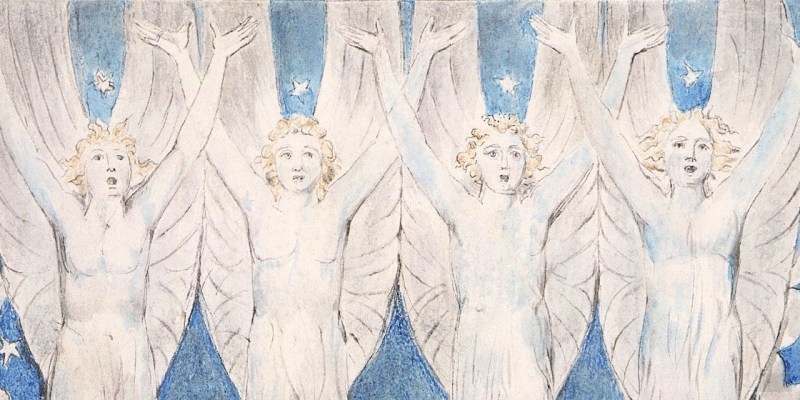The Creation of Light: William Blake and Francisco de Holanda
Fiat Lux: The Perception of Spacetime and the Fallen Imagination


Introduction: Cosmos as Masterpiece

Francisco de Holanda, self-portrait (c. 1573), the artist presenting his book
As many critics have pointed out, the remarkable work of the Portuguese Renaissance artist Francisco de Holanda “seems to predict another singular genius: William Blake, whom it predates by two centuries” (Michael Benson, Cosmigraphics: Picturing Space Through Time). Equally remarkable is the fact that many of Holanda’s most astonishing paintings were only discovered a few decades ago. As Benson notes in his compelling examination of visual depictions of the creation of the universe and of Holanda’s work in particular (a rarity in itself in Western academic studies, as there is still almost nothing written about this pioneering figure):
Perhaps the most extraordinary set of pictures depicting space-time’s origins dates from 1573. Discovered in the mid-20th century in an obscure notebook in the National Library of Spain, it was painted by the Portuguese artist and philosopher Francisco de Holanda, a student and lifelong friend of Michelangelo.


